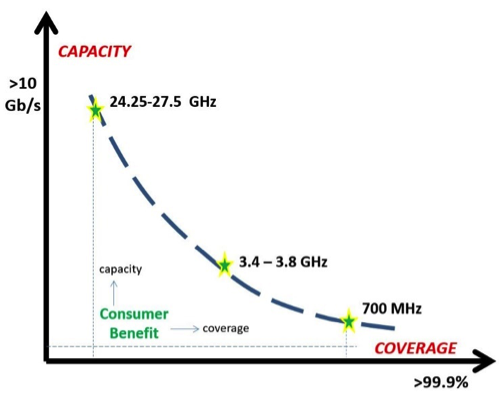Last week’s Westminster Forum in London devoted four hours to debate 5G mobile technology, its regulation and policy impacts. Assembled experts discussed technical standards, spectrum bands and licencing processes. They discussed the expectations for faster, more-responsive data flows. They waxed almost lyrical about sensors and lamp posts. Even the scope for better city management was thrown into the discussion.
But amongst all that 5G chatter I counted just seven very brief mentions of ‘full fibre’ – mostly during a 10-minute overview from one panellist who was concerned that only 60 per cent of the UK’s few thousand mobile phone masts were served by fibre backhaul.
This week’s FTTH Conference in Valencia devoted well over four hours to discussing 5G mobile. 5G mobile gets the fibre brigade racing into action. The contrast between these two technology camps could not be greater.
Why should the fibre brigade get so excited? Why are mobile maestros not bothered?
Plans for 5G promise a lot. They promise huge data throughput. They promise amazingly low latency — no more of those awkward on-screen delays between questions and answers. No more delays with cloud-based services. No danger of decision delays for autonomous vehicles and connected cars. For it is writ in the PR clouds that all this and more will come to pass one day.
When that day comes the 5G signals will land on, or stream from, your mobile device at an ultra-high frequency – 26GHz or 28GHz in the USA. Current 3G or 4G mobiles operate around 0.7 to 3.4GHz and, whilst these lower frequencies will be badged as 5G, the real heavy lifting will only arrive at the higher frequencies.
But those signals will not arrive from very far away.

At or above 26GHz, the typical coverage area for a 5G microcell will be between 50 to 200m in radius.
At a conservative estimate, London alone will need half a million small cells – and each and every one will need full fibre backhaul.
It is not just the coverage density of fibre that so excites the fibre industry. The operational requirements will be such that fibre technologies will need upgrading to the latest (and they promise ultimate) standard, NG-PON2.
For the time being, however, the scale of future deployment is grabbing the fibre headlines. Estimates suggest that the number of mobile nodes (currently masts) need to be increased by factors between 10 to 16 – to reach somewhere between 3 and 5 million nodes across the UK.
We will not see a huge rash of masts because these new nodes will be little larger than a typical home router — but their positioning on buildings (and atop lamp posts) will be critical. Generally higher is better, and architects and campus designers will need to move on beyond their understanding of Wi-Fi propagation.
Those countries that already have high full fibre penetration can currently boast of their exemplary 4G mobile coverage. Other countries continue to complain to mobile operators of poor coverage, but that’s partly a reflection of the excessive costs for fibre backhaul connectivity. but now, as the tide turns towards 5G, the weaknesses of the 4G estate become clear. Countries with ‘fibre maturity’ now see their ‘5G readiness’ as yet another competitive advantage for inward investment and growth of a digitally skilled workforce. It was no accident that Sweden was the breeding ground for Skype, Spotify and many other unicorns.
Mobile futures depend on fibre but first the technology camps must start talking to each other.
• David Brunnen is editor, Groupe Intellex, and chairs the steering group for the Intelligent Community Forum’s 2018 Global Summit in London, June 4th-6th.


